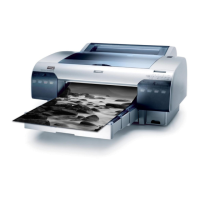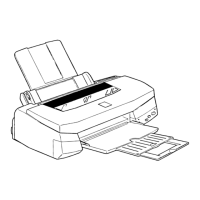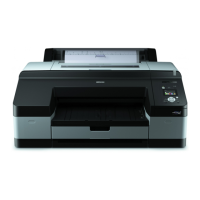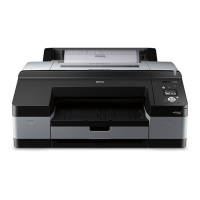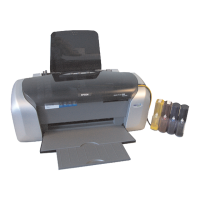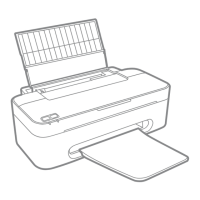EPSON Stylus Pro 4400/4450/4800/4880/4880C Revision C
Operating Principles Printer Mechanism Components 130
PG/PO Motor (Stepping motor)
When the transmission path is switched to the platen gap adjustment side
by the Carriage unit movement and DE Lock Lever, the PG/PO Motor can
automatically shift (rotation movement of Carriage Shafts, both front and
rear) the PG position up or down.
Movements of the PG/PO Motor drive transmission to the Platen Gap
adjustment side are shown below.
Note : Rotation of the motor in the clockwise direction as seen from the Motor Pinion
Gear is considered "clockwise".
The Adjustment Lock Bushing rotates with the rotation of the Carriage Shaft.
When Carriage Shaft rotation stops, the PG Lock Lever locks the Adjustment
Lock Bushing. Securing the Adjustment Lock Bushing suppresses rotation of
the Carriage Shaft and prevents fluctuation in platen gap.
The locking position has 4 levels to match PG.
Figure 2-23. PG Setting Positions
The sensors used in the platen gap adjustment components are described
below.
PG Phase Sensor
This is a transmissive sensor installed on the left side of the printer that
detects the PG position (height of head from paper surface) and machine
home position (home) at the time of adjustment movements. A reflective
sensor is used to detect the flag position of the shield plate attached to the
right side of the front Carriage Shaft. With machine home position as the
standard, 4 head positions can be obtained.
Table 2-7. PG/PO Motor Rotation Directions and Functions
PG/PO Motor Rotation Direction Function
Clockwise PG small side → PG large side
Counterclockwise PG large side → PG small side
PG Lock Lever
PG minimum sidePG large side
Adjustment Lock Bushing
Table 2-8. PG Setting
Position
Gap
Width
Application
Pulse Count from Origin
(Converted to 2-2 Phase
Excitation)
Macimum 2.6mm Platen gap for thick paper 244
Large 2.1mm Platen gap for paper which can be
soiled if setting is for thin paper
176
Medium 1.5mm Platen gap fot specified thin paper
which has frictional force more
than the other thin paper.
96
Small 1.2mm Platen gap for thin paper 60
Minimum 0.7mm Platen gap for film 0

